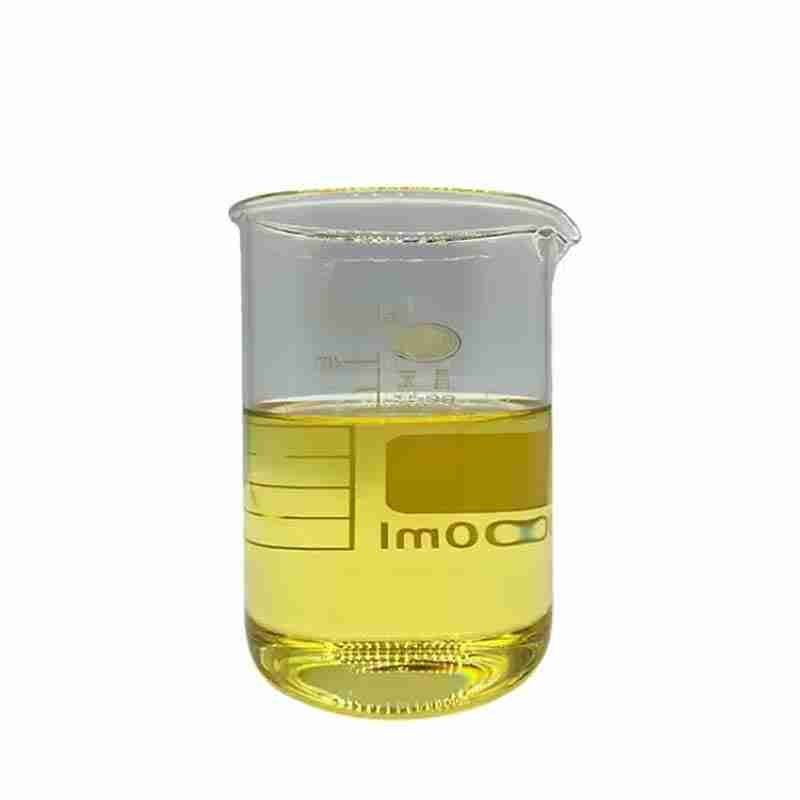Hydroxyethyl Cellulose CAS# 9004-62-0
Hydroxyethyl cellulose is a commonly used cellulose ether organic water-based ink thickener. It is a water-soluble non-ionic compound. It has good thickening ability for water and can be degraded by oxygen, acid and enzyme. It can be cross-linked by Cu2+ under chemical conditions. It is stable to heat, does not gel when heated, does not precipitate under acidic conditions, and has good film-forming properties. Its aqueous solution can be made into a transparent film, which can be formed by the interaction of alkaline cellulose and ethylene oxide.
发送询盘
Hydroxyethyl Cellulose CAS# 9004-62-0
| Hydroxyethyl Cellulose Basic information |
| Thickeners and binders?Chemical properties?Uses?Production methods |
| Product Name: | Hydroxyethyl Cellulose |
| Synonyms: | ah15;aw15(polysaccharide);aw15[polysaccharide];bl15;Natrosol L 250;hydrdoxyethyl cellulose;2-HYDROXYETHYL CELLULOSE, AVERAGE MV CA. 90,000;2-HYDROXYETHYL CELLULOSE, AVERAGE MV CA. 1,300,000 |
| CAS: | 9004-62-0 |
| MF: | C29H52O21 |
| MW: | 0 |
| EINECS: | 618-387-5 |
| Product Categories: | Cellulose;pharmaceutical,food,Construction;Carbohydrates;Carbohydrates A to;Carbohydrates H-LBiochemicals and Reagents;Polysaccharide;Cnbio;Materials Science;Natural Polymers;Polymer Science;Polymers;Natural Polymers;Polymer Science;cosmetic;Disinfectants;bc0001;9004-62-0;HEC |
| Mol File: | Mol File |
| Hydroxyethyl Cellulose Chemical Properties |
| Melting point | 288-290???C (dec.) |
| density | 0.75?g/mL?at 25???C(lit.) |
| storage temp. | 2-8??C |
| solubility | H2O: ??5?wt. % at?20???C |
| form | powder |
| color | hite to yellowish fibrous |
| Odor | Odorless |
| PH | pH(20g/l,25??) : 5.0??8.0 |
| Water Solubility | almost transparency |
| Merck | 14,4673 |
| Stability: | Stable. Incompatible with strong oxidizing agents, acid chlorides, acid anhydrides |
| InChIKey | CWSZBVAUYPTXTG-UHFFFAOYSA-N |
| SMILES | O1C(CO)C(OC2C(O)C(O)C(OC3C(OCCO)C(O)C(OC)C(CO)O3)C(COC3C(O)C(O)C(OC)C(CO)O3)O2)C(O)C(O)C1C |
| CAS DataBase Reference | 9004-62-0(CAS DataBase Reference) |
| EPA Substance Registry System | 2-Hydroxyethyl cellulose (9004-62-0) |
| Safety Information |
| Hazard Codes | T |
| Risk Statements | 23/24/25-36/37/38 |
| Safety Statements | 26-36-45-24/25-22 |
| WGK Germany | 3 |
| RTECS | FJ5958000 |
| F | 3 |
| Autoignition Temperature | 725 ??F |
| HS Code | 39123980 |
| Hazardous Substances Data | 9004-62-0(Hazardous Substances Data) |
| Toxicity | LDLo intravenous in women: 5100mg/kg/6D- |
- 2
- 2-diallylpent-4-en-1-amine
- 4
- 95-16-9
- Ammonium sulfamate
- Benzothiazole
- cas:67889-00-3ح2
- cas:83524-75-8 | pigment black 32
- cas:928836-00-4 | 2
- cas:932745-70-5 | 4
- Chemical Minerals
- Coconut diethanolamide
- Daily Chemicals
- discount
- for sale
- General pvc resin
- hexyl D-glucoside
- in stock
- Lauramidopropyl betaine
- LAURIC ACID MONOETHANOLAMIDE
- Petroleum Additives
- Plasticiser
- Ploymers
- price
- PVC
- quotation
- Raw Materal
- Remove term: Petroleum Additives Petroleum Additive
- SODIUM ETHYL 2-SULFOLAURATE
Related Products
Terpene resin is a type of natural resin derived from terpenes, which are organic compounds found in various plants. It is known for its aromatic properties and is commonly used in the production of fragrances, flavorings, and as a component in adhesives and coatings within the chemical industry. Terpene resin offers a range of benefits, including enhancing the solubility of essential oils and providing a stable base for various applications. Its natural origin makes it a preferred choice for eco-friendly products.
N,N-Dimethylaniline is an organic compound with amine and methyl groups attached to a benzene ring. It is a colorless liquid with a characteristic amine odor. This compound is primarily used as a chemical intermediate in the synthesis of dyes, pigments, and polymers. Its reactivity makes it a valuable building block in the production of various organic compounds, particularly in the pharmaceutical and chemical industries.
Chemical Name: Ashwagandha Extract
Synonyms: Withania somnifera, ext.; Withania Somnefera Extract
CAS: 90147-43-6
Appearance: Brown
Chemical Name: Arabic gum
CAS No.: 9000-01-5
Appearance: powder
Chemical Name: Quercetin-3-O-sophoroside
CAS No.: 18609-17-1
Molecular Formula: C27H30O17
Molecular Weight: 626.52
Chemical Name: 3-Hydroxybutyric acid
CAS No.: 625-71-8
Molecular Formula: C4H8O3
Molecular Weight: 104.1
Appearance: White powder
Tetraacetylethylenediamine is a fully acetylated derivative of ethylenediamine, offering a high reactivity as an intermediate in organic synthesis. Its unique structure makes it a critical component in the production of specialty chemicals and pharmaceuticals, ensuring a wide range of applications in the chemical industry.
Succinimide is a heterocyclic organic compound and an important industrial chemical. It serves as a key intermediate in the synthesis of various pharmaceuticals, agrochemicals, and other specialty chemicals. Known for its reactivity and versatility, succinimide is widely used in the production of succinic anhydride, a precursor to many polymers and plasticizers, highlighting its significance in the chemical industry.
Chemical Name: Imazalil Sulfate
CAS No.: 58594-72-2
Molecular Formula: C14H14Cl2N2O.H2SO4
Molecular Weight: 395.26
Appearance: Solid
Chemical Name: o-Xylene
Synonyms: 1,2-Dimethylbenzene; ortho-xylene
CAS No.: 95-47-6
Molecular Formula: C8H10
Molecular Weight: 106.17
Chemical Name: Ammonium Iron(II) Sulfate
Synonyms: Diammonium iron bis(sulphate); iron (ii) ammonium sulfate
CAS No.: 10045-89-3
Molecular Formula: FeH5NO4S
Molecular Weight: 170.95
Silicone oil, known for its chemical designation as dimethicone or polydimethylsiloxane, is a synthetic polymer with a backbone of alternating silicon and oxygen atoms, creating a highly versatile and stable compound. It is renowned for its exceptional lubricating properties, heat resistance, and non-toxic nature, making it a staple in various industries, including cosmetics, automotive, and aerospace.
This hydrophobic, non-volatile oil is valued for its ability to provide a smooth, non-greasy feel and to form stable emulsions with other ingredients. In personal care products, silicone oil is used to impart a silky texture, reduce friction on the skin, and create a protective barrier against environmental stressors without clogging pores.
Silicone oil’s chemical inertness and resistance to oxidation contribute to its long shelf life and stability in formulations. It is also appreciated for its compatibility with a wide range of substances, allowing for the creation of multifunctional products.
In summary, silicone oil is a reliable and multifaceted ingredient, offering a combination of performance, safety, and sensory benefits. Its use in a variety of applications reflects its versatility and enduring appeal in the marketplace.


















